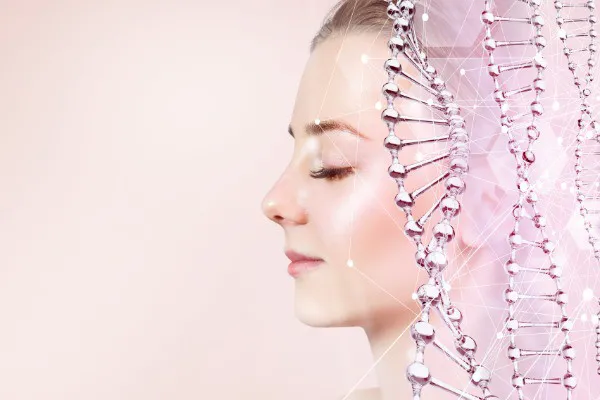
Tiny but divisive: a deep dive into the legality and safety of exosomes
Exosomes are the hot new kid on the regenerative beauty block. While those derived from humans are thought to have superior anti-ageing properties, they are illegal in the UK but are reported to be widely available in aesthetics. We get the expert lowdown…
Regenerative medicine is being hailed as the future and is becoming more widely practised in aesthetics due to the promise of exciting new treatments that heal tissues while restoring function that has succumbed to ageing, disease and environmental damage.
A new frontier of this research is focused on exosomes, nano-sized naturally-occurring ‘extracellular vesicles’ produced by almost every cell of living organisms. Plants and animals produce these tiny bundles of biological information, and so do we.
There are a lot of opposing opinions on which biological source is best, but to Dr Tunc Tiryaki, consultant plastic surgeon and founder of the London Regenerative Institute, it’s a no-brainer… “Human exosomes are the best because they are most similar to our genetics.”
The best way to harness exosomes, says Dr Tiryaki, is to use those extracted from donated young human tissue where the regenerative power is very strong and inject them. “But there are only two ways to sell an injectable material: to go through the pharmaceutical or medical device pathways.”
Avoiding these pathways, companies have been marketing and selling exosomes to be applied topically.
The problem is that cosmetic or off-label use of human biological products is illegal in Europe and the UK, but opinion also differs on whether that includes human exosomes topically applied, with further confusion surrounding whether using them is safe…
What are exosomes?
Exosomes are little lipid-encased sacs that act as messengers ferrying signalling molecules like proteins and other genetic materials to tell cells how to behave.
“Exosomes can contain many different substances – peptides, lipids, growth factors, vitamins and minerals, as well as DNA (genetic information),” says Dr Sophie Shotter.
“They can speed up healing and repair after aesthetic treatments, as well as improve cellular communication and stimulate collagen, elastin and HA. The results can be extraordinary, and as a regenerative treatment, they have huge potential.”
What makes exosomes so attractive to the aesthetics community is their ability to instruct older cells to act like younger ones, crowning them as an anti-ageing powerhouse.
“Exosomes are the next megastar in regenerative medicine and will be bigger than Botox,” predicts Dr Shameema Damree, the founder and medical director of EvoCyte, the UK distributor for ExoCoBio, a Korean biotech company focused on exosome manufacture – human, plant and animal-derived.
EvoCyte previously supplied the biotech’s human-derived product before pivoting to rose exosomes “to be in line with UK and EU laws.”
Plant, animal and human-derived exosomes can all be ‘loaded’ with additional cargo, such as growth factors, to add to the regenerative benefits. Application can be topical, but deeper penetration by injection or microneedling into the skin yields better results.

Are exosomes legal in the UK?
Not the human ones. But still, “human exosomes are, unfortunately, widely being distributed in the UK at present,” says Shotter.
“Exosomes for skin rejuvenation started in Korea and the USA where the use of human-derived products is legal, and so there are many available across the globe from human sources.”
However, today, there is not a single exosome brand with a pharmaceutical licence, adds Dr Tiryaki. “So nowhere in the world are you allowed to inject it. Period!”
“There is a lot of misconception in our market,” says Damree. “But there are no regulatory approved exosomes regardless of the source [plant, animal or human derived]. We are still waiting on Phase III Trials for the use of exosomes in hospitals. This is why all the products have been registered for topical application.”
As no exosomes have been approved by the likes of the Food & Drug Association (FDA) or the MHRA, they are not allowed to be injected but can be applied legally, either topically or via microneedling.
But, as cosmetics are neither a pharmaceutical nor a medical device, they do not come under the Medicines and Healthcare Products Regulatory Agency’s (MHRA) government, leaving human exosomes sold for topical use off the agency’s radar.
The MHRA do, however, govern a doctor’s usage of illegal products, so those injecting exosomes or using human ones could be putting themselves and (some argue) their patients at risk.
“Similar to what we’ve seen with injectables, there are always going to be unlicensed products available, so it’s important for clinicians and practitioners to weave through all of the clinical data, safety and regulations wherever they are to make sure they’re using good products,” says surgeon and founder S-Thetics Miss Sherina Balaratnam.
“Human-derived ingredients are strictly banned in the UK, so if practitioners were to continue to use these materials, they would need to be able to fully justify their actions in a court of law, especially if there is a patient side effect.”
What about safety?
Our experts are divided on whether the use of human exosomes, regardless of legality, is safe.
Shotter says the potential dangers come with the risk of disease transmission and the transfer of genetic material.
On the other side, although human exosomes contain microRNA, Damree explains that they are not cells, so they cannot transmit diseases or viruses. “They can’t replicate or make a protein; they are just carriers of the code, so I think there is a lack of understanding of what an exosome truly is and many companies out there that claim to be selling exosomes but aren’t.”
“Cells are very big, and written on every cell is your nametag, your DNA,” says Dr Tiryaki. “Exosomes are so small, they don’t have name tags.”
“I think people are becoming really narrow-minded and think everything human-derived is wrong; It’s not!” Damree continues. “People are forgetting about all the human-derived products used in hospitals… plasma, stem cells, bone marrow…”
“Some researchers will say the exosomes may be too small to produce any significant change to the human recipient, and others will say different,” says Balaratnam. “But as it stands, it is illegal, so for me, it’s binary - I want to practice safe, ethical, evidence-based medicine for my patients every day.”
Can plant and animal exosomes match up?
Regarding which exosome source is best, it depends on who you ask.
“A human exosome contains 1500 microRNA while a plant contains only around 20. How can you compare?” says Dr Tiryaki. “The only way to get a proper set of microRNA from plants is to select, say, 20 from a banana, 20 from a coconut, etc… plant exosomes are far less potent than human or animal.”
This sort of plant exosome cocktailing is already becoming established, with companies like AMP creating plant-derived exosomes from multiple sources.
“In my opinion, the area which is most exciting is plant and bacterial-derived exosomes,” says Shotter. “EXOIE from AMP uses ingredients from many different plants, as there is no ONE plant which has everything that human cells need to communicate.”
“To make a human exosome product, it has to be lyophilised/freeze-dried to protect it from oxygen,” Shotter continues. “This process destroys many of the beneficial ingredients, requiring more to be added. This process is not needed with plant exosomes.”
To this, Dr Tiryaki says it depends on how the cold chain of the biological product is done. “If done properly, the efficacy should not be affected.”
Damree argues that all biological material should be frozen, adding that it’s not about the quantity of exosomes but rather the quality as well as the manufacturing abilities of the producer.
In EvoCyte’s pivot to provide plant exosomes, the company chose the finest Bulgarian roses “because the shape and size of those particular rose exosomes are very similar to ours, so can trigger our cells.”
As for the animal-derived, Dr Tiryaki, who is working with exosomes harvested from bovine umbilical cords, says that with 99% similarity to human genetics, they are a better option… “Plus, bovine products are legal and are already accepted cosmetic ingredients.”
The future of exosomes
Damree believes that once the first human-derived exosome is approved for use in medicine, the regulations will start to move in favour of their topical application, but that could be a long way off.
“The core science is all derived from humans because that’s where the money has been invested by big pharmaceutical companies,” she says. “But for now, plant and animal are the best we can get,” she says.
“We are in an era where patients are asking more about plant-based and organic products,” adds Balaratnam, who uses EXOIE. “We have to go with the times, be agile and evolve with what consumer demand. You have to think outside the box and see what’s available.”
Biotechs who have been in the business of human exosomes will have the edge on all exosome development as they have the underlying technology and manufacturing capabilities to produce high-quality exosomes at scale, Damree adds.
During this hotbed of activity, it will be important to look into what companies are selling, where they get their exosomes from and the facilities in which they are isolating them.
“You cannot just trust that a company has exosomes,” says Dr Tiryaki. “They must be reputable and have peer-reviewed articles about their product and adhere to good manufacturing processes for extraction.”
Far more research is needed to understand these tiny but divisive bubbles of potential, but their prospects include targeted drug delivery and a new era of skincare and anti-ageing.
